Wondering what Arizona is known for?
From the Grand Canyon to Monument Valley, Arizona is famous for so many wonderful things and is well worth a visit.
In this guide, we’re going over everything from the food Arizona is famous for to the history Arizona is famous for to the music and culture that define this state.
How do I know?
I’ve been to Arizona many times during my travels in the US and have really fallen in love with this state.
After all, it’s the state of the Petrified National Forest, Route 66, and Sedona! You can experience stunning natural scenery like Lower Antelope Canyon, take the road trip of a lifetime, or explore the history of the Wild West.
Let’s jump into the best things Arizona is known and famous for so you can get to know this state even better.
1. Grand Canyon
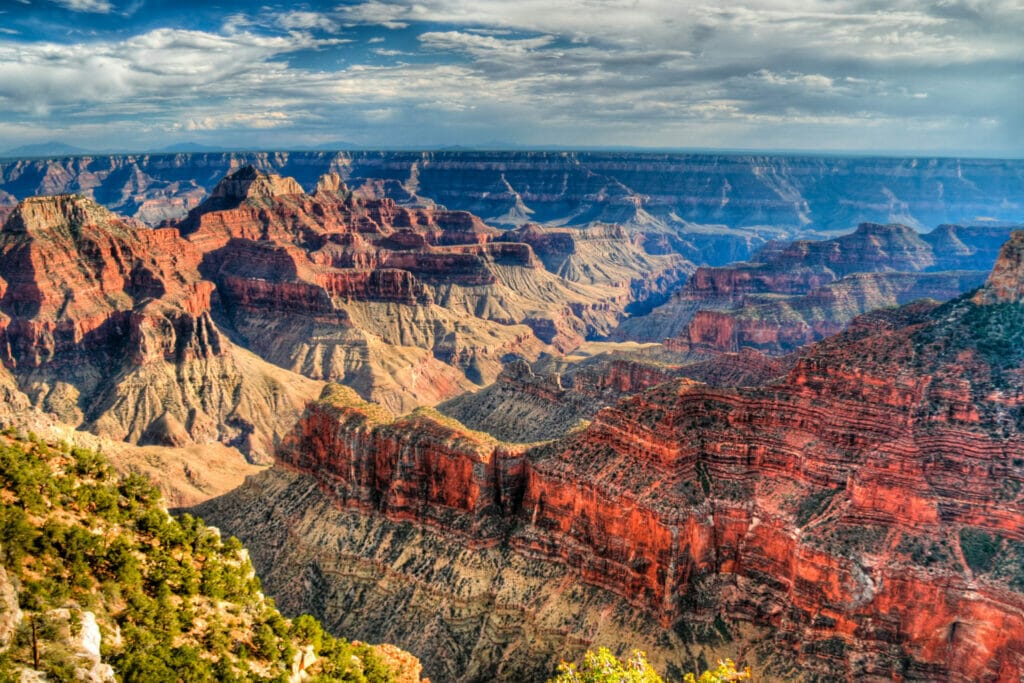
The Grand Canyon is a geological marvel that stretches for over 270 miles and plunges up to a mile deep.
Carved by the Colorado River over millions of years, its vastness and intricate rock layers tell the story of Earth’s geological history.
The South Rim is the most visited area, offering panoramic vistas and well-maintained trails for hikers of all skill levels.
The North Rim provides a more remote experience with fewer crowds.
The Grand Canyon is not just a visual wonder; it’s a testament to the power of natural forces and a destination that offers both adventure and contemplation.
2. Desert Landscapes
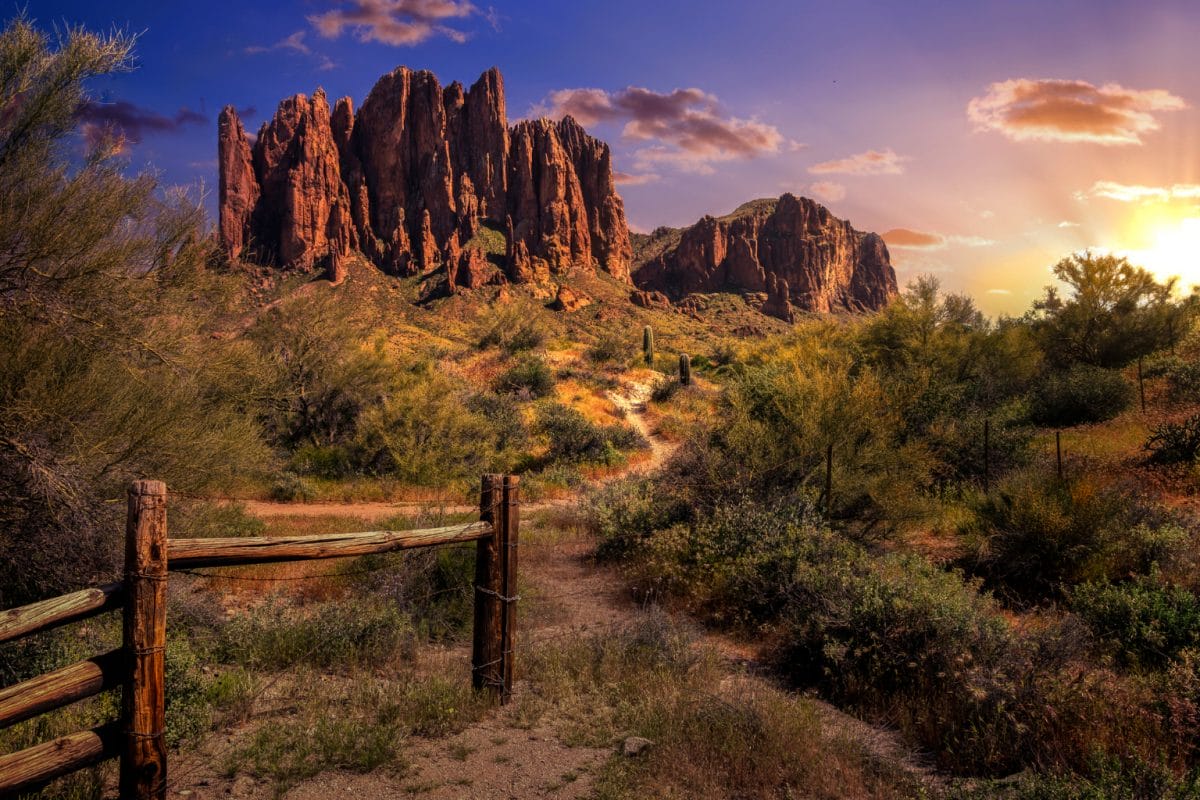
Arizona’s desert landscapes encompass a variety of terrains, from the towering saguaro cacti in the Sonoran Desert to the stark beauty of the Mojave Desert.
The Sonoran Desert, home to the iconic saguaro, is also known for its unique flora and fauna, including the barrel cactus, creosote bushes, and javelinas.
The stark beauty of the Mojave Desert, with its Joshua trees and rugged landscapes, presents a different kind of desert experience.
The Chihuahuan Desert, with its grasslands and striking vistas, adds further diversity to Arizona’s desert offerings.
3. Cacti

The saguaro cactus is emblematic of Arizona’s desert landscapes and can live for well over a century.
Its towering presence is a symbol of the American West and is featured in countless depictions of the region.
Beyond the saguaro, other cacti like the barrel cactus store water in their globular shapes, while prickly pears offer colorful fruit.
The cholla cactus, with its spiky, segmented branches, and the organ pipe cactus, named for its multiple arms resembling organ pipes, contribute to the unique cactus biodiversity in the state.
4. Petrified Forest National Park
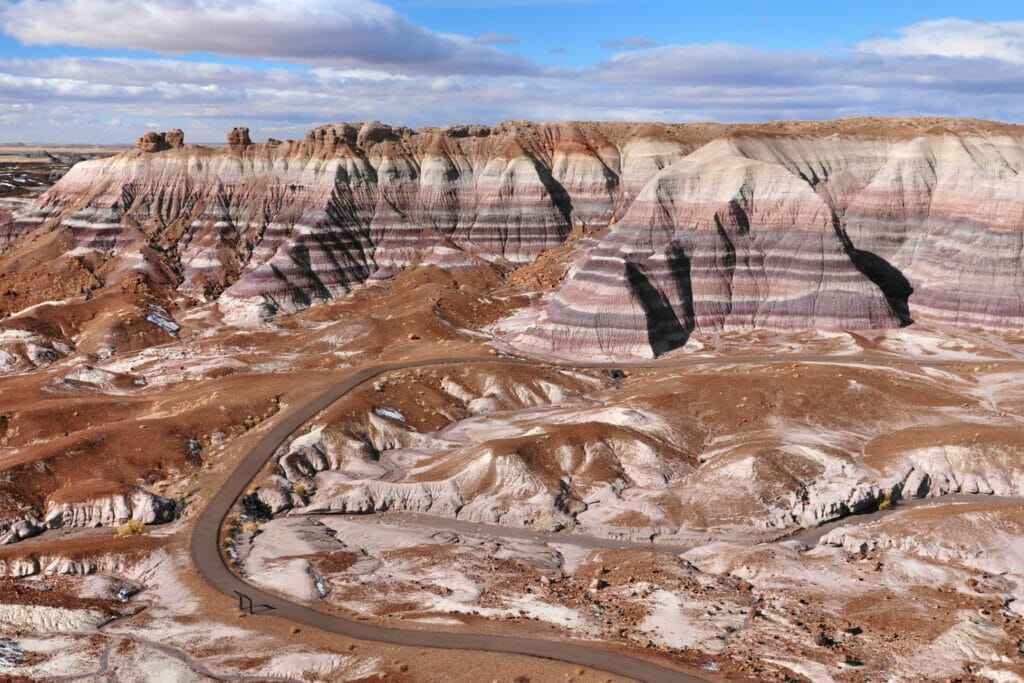
This park protects one of the largest and most colorful concentrations of petrified wood in the world.
The logs, which date back to the Late Triassic period, have mineralized into stunning quartz and agate formations.
Visitors can explore the Painted Desert’s multicolored badlands and the historic Route 66 that passes through the park.
The park offers insights into the prehistoric landscape and the process of petrification, giving visitors a glimpse into the ancient past.
5. Monument Valley

Monument Valley’s distinctive red sandstone formations have been featured in countless movies, commercials, and iconic photographs.
The towering buttes and mesas rise dramatically from the desert floor, creating a breathtaking scene that exemplifies the wild beauty of the American West.
Guided tours led by Navajo guides provide cultural and geological insights into this sacred land, highlighting its significance to the Navajo people and its enduring impact on popular culture.
6. Native American Culture

Arizona’s Native American culture is deeply woven into its history and identity.
The state is home to 22 federally recognized tribes, each with their own distinct languages, traditions, and histories.
Visitors can immerse themselves in Native American art, dance, and music through events like powwows and cultural festivals.
Ancient dwellings such as Montezuma Castle and Tuzigoot National Monument offer a glimpse into the ancestral Puebloan peoples’ lives, while modern tribal communities share their stories through museums and educational programs.
7. Historic Route 66

Route 66, also known as the “Main Street of America,” was a legendary highway that connected Chicago to Los Angeles.
In Arizona, it winds through iconic towns like Flagstaff, Williams, and Kingman.
Traveling along Route 66 today is a journey back in time, with vintage motels, neon signs, and roadside attractions evoking the nostalgia of mid-20th-century road trips.
It’s a testament to the enduring appeal of the open road and the stories of those who once traveled it.
8. Wild West History
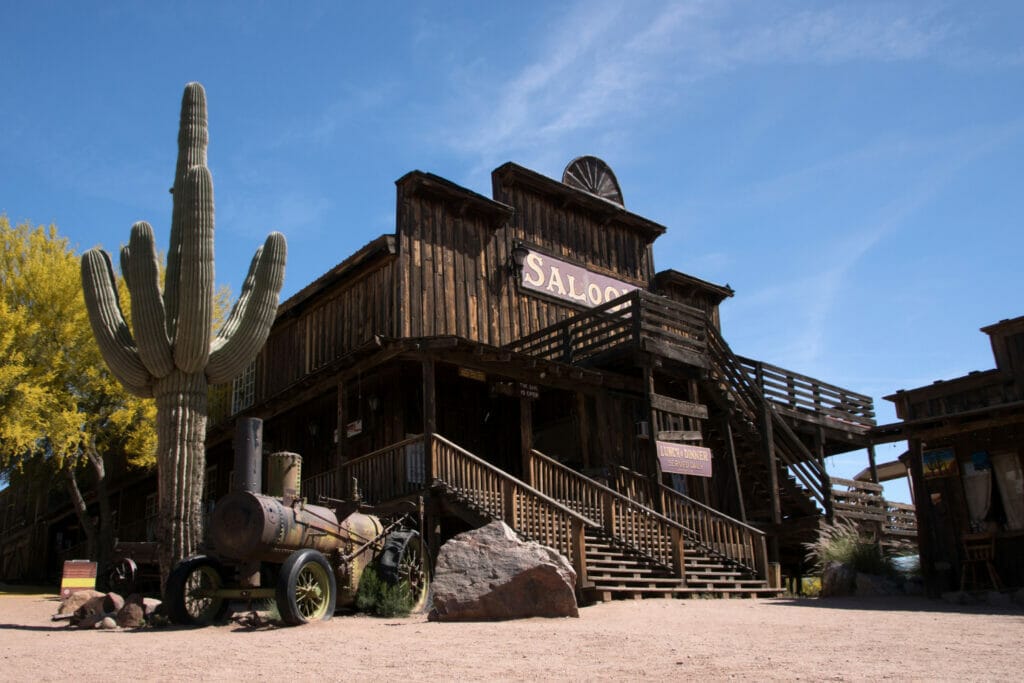
Arizona’s Wild West history is full of legendary figures and events that have become ingrained in the American consciousness.
The town of Tombstone, famous for the O.K. Corral shootout, offers daily reenactments that transport visitors to the days of Wyatt Earp and Doc Holliday.
The historic mining town of Jerome, perched on the side of Mingus Mountain, is another relic of the Wild West era, once known as the “Wickedest Town in the West.”
These stories of lawmen, outlaws, and prospectors contribute to the state’s rich historical tapestry.
9. Copper Mining
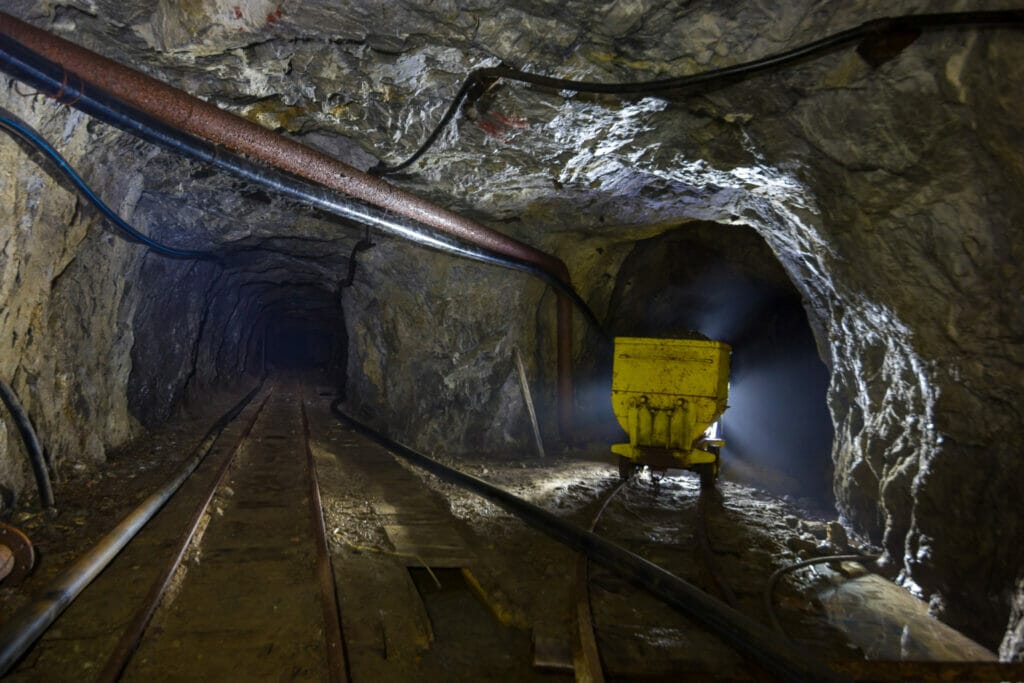
Arizona’s nickname, the “Copper State,” reflects its significance in the copper mining industry.
The Morenci Mine, one of the largest copper mines in the world, has played a pivotal role in the state’s economy.
Mining towns like Bisbee, with its colorful architecture and preserved mines, provide insight into the challenges and triumphs of copper extraction.
The state’s mining heritage showcases the relationship between natural resources and economic growth.
10. Old Tucson Studios
Old Tucson Studios is both a homage to and a recreation of the Old West, having been the backdrop for numerous Western films and TV shows.
Visitors step into a living film set, where actors perform shootouts, stagecoach rides, and stunt shows.
The studio’s historical significance is matched by its entertainment value, offering an immersive experience that captures the spirit of the Wild West.
11. Sedona

Sedona’s allure goes beyond its stunning red rock formations.
The town’s reputation as a spiritual and healing destination draws seekers and artists from around the world.
Visitors explore vortex sites believed to emit unique energy, and the Sedona International Film Festival highlights its vibrant arts scene.
The red rock landscapes provide both solace and inspiration, making Sedona a place of rejuvenation for body, mind, and soul.
12. Saguaro National Park
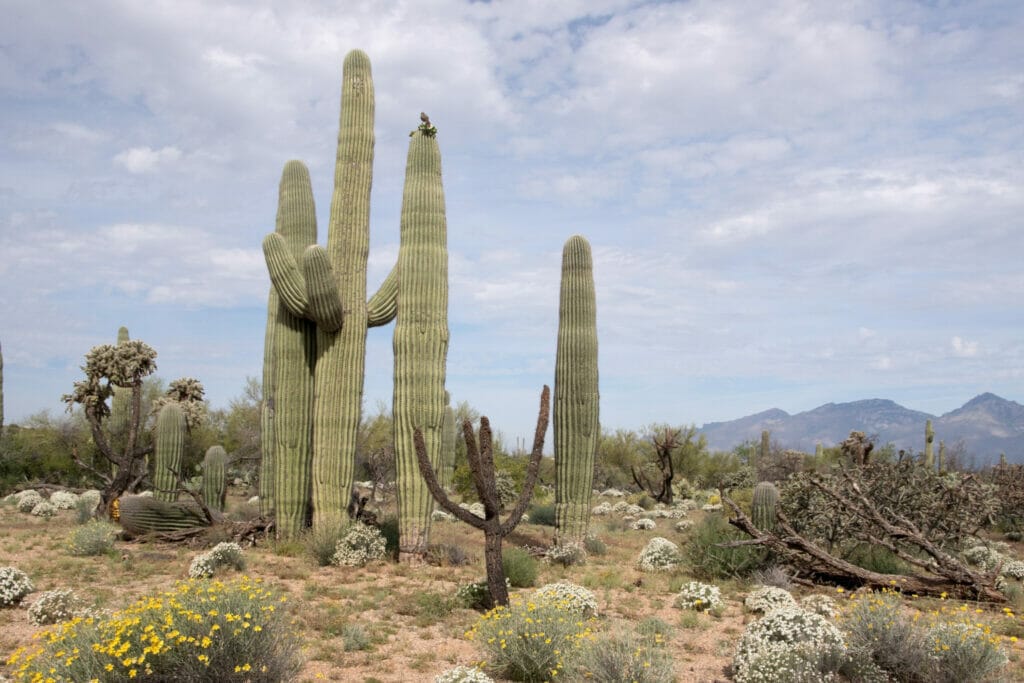
Saguaro National Park encompasses two distinct districts on the east and west sides of Tucson.
The park protects the saguaro cactus, an icon of the American Southwest. The plant’s towering arms and distinctive silhouette define the desert landscape.
Visitors can explore a variety of trails, from easy walks to challenging hikes, immersing themselves in the unique beauty of the Sonoran Desert.
The park’s desert flora and fauna, including desert tortoises and Gila monsters, showcase the remarkable adaptations that life has made to survive in this arid environment.
13. Biosphere 2
Originally intended as an experiment in creating a self-sustaining environment, Biosphere 2 has evolved into a center for scientific research and education.
The facility’s domes house different ecosystems, including a rainforest and a desert, allowing researchers to study the interactions between living organisms and their environment.
Biosphere 2 provides insights into Earth’s complex systems and serves as a laboratory for understanding environmental challenges.
14. Hoover Dam
While primarily situated in Nevada, Hoover Dam’s impact on Arizona’s water and power resources is significant.
The dam’s construction in the 1930s brought jobs and electricity to the region.
The creation of Lake Mead behind the dam provides water for irrigation, municipal use, and recreation.
Its engineering marvel continues to be a symbol of human ingenuity in harnessing natural resources for the benefit of society.
15. University of Arizona
The University of Arizona, located in Tucson, is a major research institution with contributions spanning various fields.
Its Lunar and Planetary Laboratory played a crucial role in the space race and planetary exploration.
The university’s involvement in astronomy, medical research, and sustainable technologies has positioned it as a hub of innovation and intellectual advancement.
16. Spring Training
Arizona’s warm climate makes it an ideal destination for Major League Baseball’s spring training camps.
Teams from across the league converge on the state to prepare for the upcoming season.
Fans have the opportunity to watch practices, attend games, and interact with players in a more relaxed setting.
The Cactus League, as it’s known, fosters a sense of community and excitement as baseball enthusiasts welcome the return of the sport each spring.
17. Astronomy
Arizona’s dark skies and clear air provide exceptional conditions for observing the cosmos.
The Lowell Observatory in Flagstaff is famous for the discovery of Pluto.
The Kitt Peak National Observatory, with its array of telescopes, conducts groundbreaking research in astrophysics.
These observatories offer public programs, allowing visitors to gaze at distant stars, planets, and galaxies, fostering a sense of wonder and exploration.
18. Kartchner Caverns State Park
Kartchner Caverns State Park offers an underground wonderland of intricate formations.
Discovered in 1974, the caverns were kept secret for years to protect their fragile environment.
Visitors can now explore the stunning chambers, featuring stalactites, stalagmites, and helictites.
The park’s commitment to conservation ensures that future generations can marvel at this underground masterpiece.
19. Phoenix

As Arizona’s capital and largest city, Phoenix is a bustling metropolis with a diverse culture and thriving arts scene.
The Heard Museum showcases Native American art and history, while the Desert Botanical Garden features a stunning array of desert plants.
The city’s sports teams, including the Arizona Diamondbacks and the Phoenix Suns, add to its vibrant energy, making it a hub of entertainment, innovation, and urban exploration.
20. Hiking and Outdoor Recreation
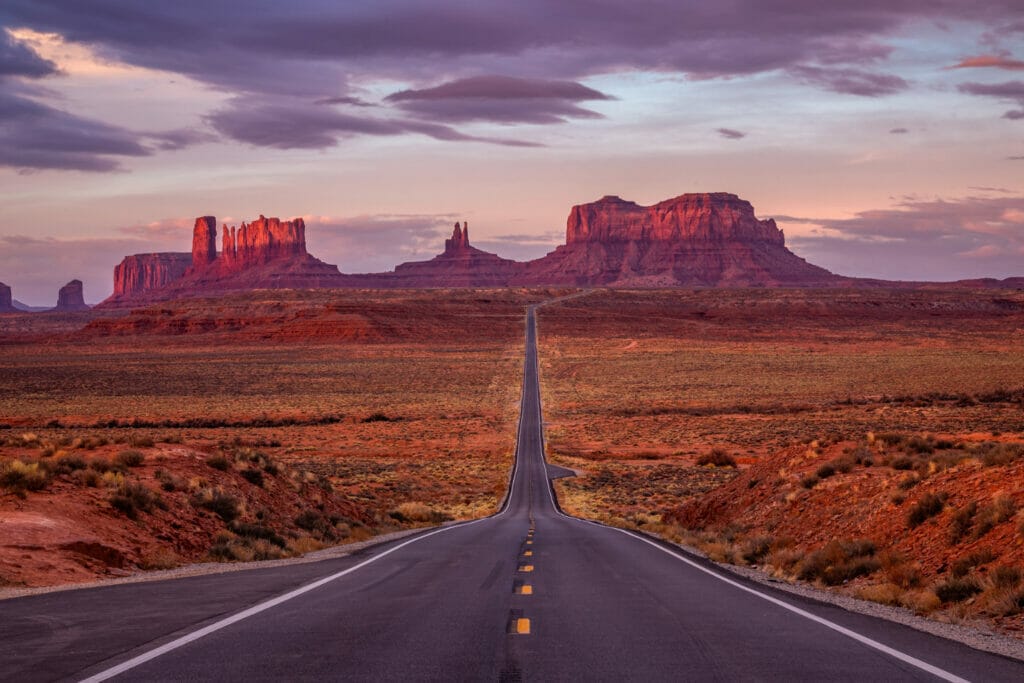
Arizona’s outdoor playground offers a wealth of hiking trails, from the challenging paths of Camelback Mountain in Phoenix to the scenic routes of Oak Creek Canyon near Sedona.
The Superstition Mountains are home to the mysterious Lost Dutchman’s Gold Mine legend.
The state’s national forests, including the Coconino and Tonto, provide opportunities for camping, rock climbing, and wildlife watching.
21. Native American Jewelry and Crafts
Arizona’s Native American artisans create intricate jewelry, pottery, textiles, and baskets that reflect their cultural traditions and skills.
Turquoise, coral, and silver are often used in jewelry, while intricate patterns and vibrant colors define their textiles.
Authentic artwork can be found at markets, galleries, and festivals, allowing visitors to appreciate the craftsmanship and stories behind each piece.
22. Aerospace Industry
Arizona’s aerospace industry plays a crucial role in aviation and space exploration.
Major aerospace companies have facilities in the state, contributing to technological advancements and economic growth.
Luke Air Force Base is a training hub for fighter pilots, while Davis-Monthan Air Force Base is home to the “Boneyard,” a vast storage facility for retired aircraft.
The Barry M. Goldwater Range supports military training and research, emphasizing Arizona’s contribution to national defense and technological progress.
23. Mexican Influence

Arizona’s close proximity to Mexico has led to a rich exchange of cultural elements, especially in culinary traditions, architecture, and celebrations.
The state’s cuisine features Mexican flavors, and dishes like chimichangas and Sonoran hot dogs have become local specialties.
Spanish colonial architecture and influences are visible in historic buildings and churches.
Festivals like Cinco de Mayo celebrate Mexican heritage, emphasizing the state’s cross-cultural connections.
24. Meteor Crater
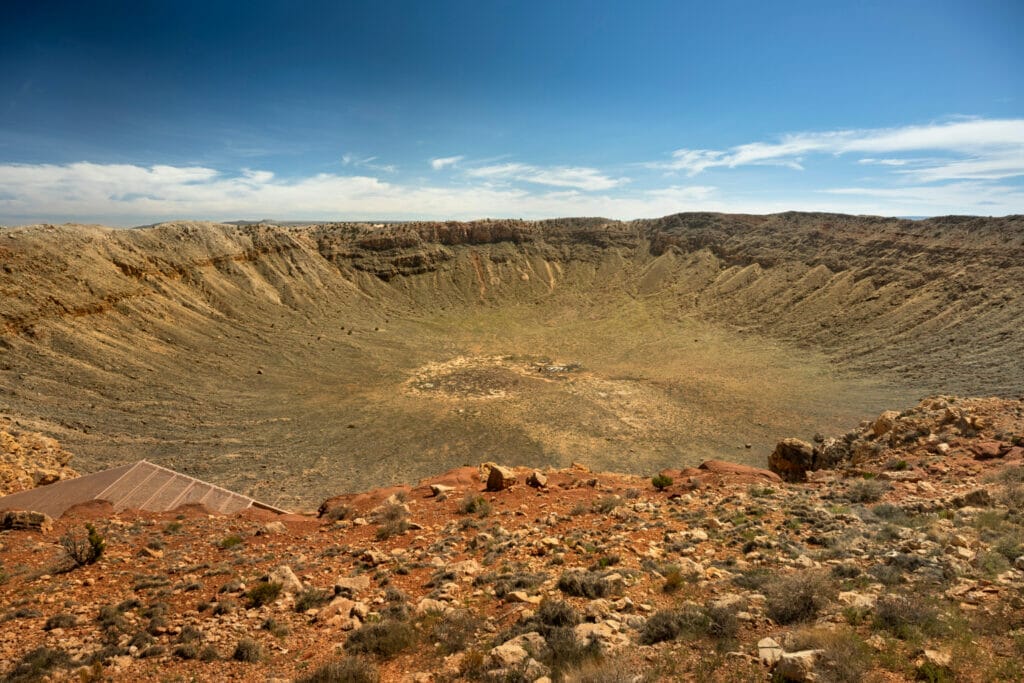
Formed around 50,000 years ago by a meteorite impact, Meteor Crater is a testament to the dynamic forces that shape our planet.
The impact left a crater nearly a mile wide and 570 feet deep.
Visitors can explore the crater rim, learning about the astronomical events that have shaped Earth’s history.
The site serves as a reminder of the powerful natural phenomena that have shaped our world.
25. Organ Pipe Cactus National Monument
This protected area showcases the unique Sonoran Desert ecosystem, characterized by its diverse plant and animal life.
The organ pipe cactus, found only in the United States and Mexico, thrives here.
Visitors can explore trails, learn about the delicate balance of desert life, and appreciate the stark beauty of this remarkable landscape.
The monument serves as a living classroom for understanding desert ecology and conservation.
Want to know what things the other US states are known for? Check out our other guides!
- Interesting Things Alabama is Known For
- Interesting Things Alaska is Known For
- Interesting Things Arkansas is Known For
- Interesting Things California is Known For
- Interesting Things Colorado is Known For
- Interesting Things Connecticut is Known For
- Interesting Things Delaware is Known For
- Interesting Things Florida is Known For
- Interesting Things Georgia is Known For
- Interesting Things Hawaii is Known For
- Interesting Things Idaho is Known For
- Interesting Things Illinois is Known For
- Interesting Things Indiana is Known For
- Interesting Things Iowa is Known For
- Interesting Things Kansas is Known For
- Interesting Things Kentucky is Known For
- Interesting Things Louisiana is Known For
- Interesting Things Maine is Known For
- Interesting Things Maryland is Known For
- Interesting Things Massachusetts is Known For
- Interesting Things Michigan is Known For
- Interesting Things Minnesota is Known For
- Interesting Things Mississippi is Known For
- Interesting Things Missouri is Known For
- Interesting Things Montana is Known For
- Interesting Things Nebraska is Known For
- Interesting Things Nevada is Known For
- Interesting Things New Hampshire is Known For
- Interesting Things New Jersey is Known For
- Interesting Things New Mexico is Known For
- Interesting Things New York is Known For
- Interesting Things North Carolina is Known For
- Interesting Things North Dakota is Known For
- Interesting Things Ohio is Known For
- Interesting Things Oklahoma is Known For
- Interesting Things Oregon is Known For
- Interesting Things Pennsylvania is Known For
- Interesting Things Rhode Island is Known For
- Interesting Things South Carolina is Known For
- Interesting Things South Dakota is Known For
- Interesting Things Tennessee is Known For
- Interesting Things Texas is Known For
- Interesting Things Utah is Known For
- Interesting Things Vermont is Known For
- Interesting Things Virginia is Known For
- Interesting Things Washington is Known For
- Interesting Things West Virginia is Known For
- Interesting Things Wisconsin is Known For
- Interesting Things Wyoming is Known For
Get the All-American Travel Secrets!
Don't miss out on America's hidden gems!
